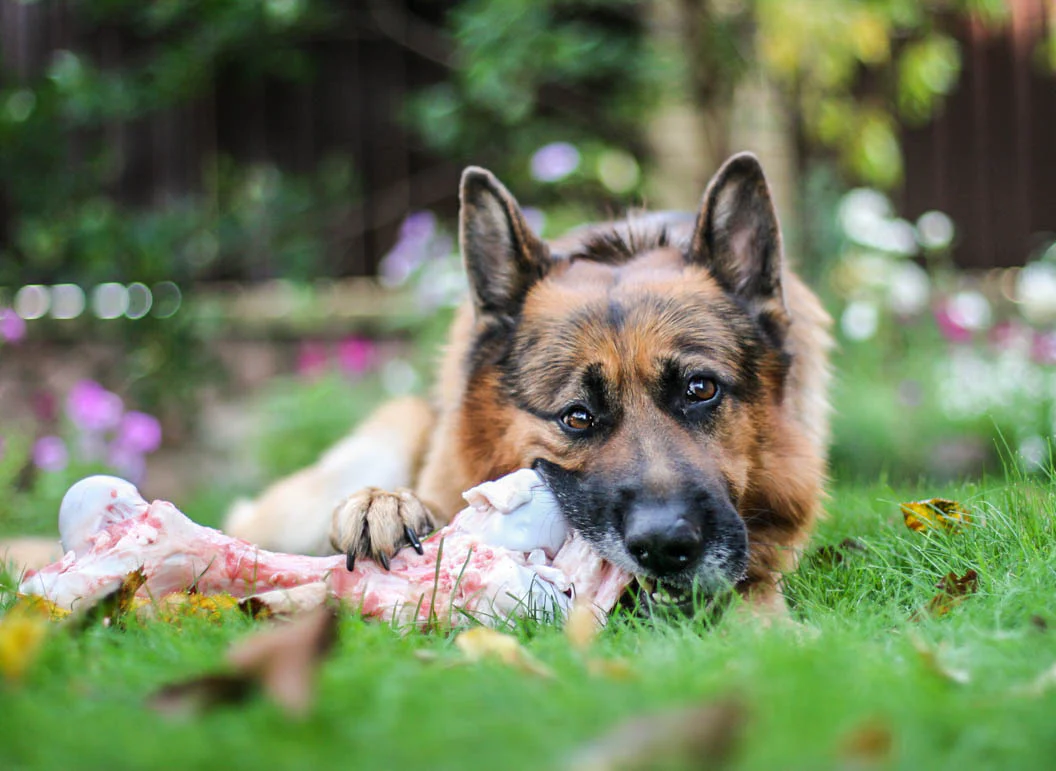
06 Jun Are Raw Bones Beneficial for Dogs?
This question arises frequently nowadays. Over the past 5 to 10 years, certain pet food companies have effectively bombarded us with the idea that dogs are essentially wolves and should therefore eat as wolves do. However, it is important to acknowledge that dogs have been domesticated and significantly altered by humans for approximately 15,000 years. While the notion of dogs consuming prey, including bones, may evoke a romantic image of their ancestral behavior, it is crucial to understand that our pet dogs are not subjected to the same survival challenges as wolves. Instead, we provide them with love, water, food, shelter, and veterinary care. Speaking of veterinary care, it plays a vital role when it comes to dogs and bones.
Bones can generally be obtained in two forms: raw or cooked. Cooked bones are exceptionally hard and should never be given to dogs for several reasons (unless you enjoy frequent visits to the vet!). Firstly, cooked bones are highly likely to break teeth. Secondly, they can splinter and become sharp, posing a risk of injury or even perforation to the mouth, throat, esophagus, stomach, or intestines. Thirdly, they are poorly digested when swallowed, potentially causing an intestinal obstruction. Lastly, bones with a sizable central hole can get stuck on the lower jaw as dogs try to enthusiastically lick out the center.
Raw bones, on the other hand, offer some advantages over cooked ones but also come with significant and dangerous drawbacks. Raw bones are much softer than cooked bones, reducing the likelihood of broken teeth, although larger or thicker bones, especially when frozen, still pose a risk. While raw bones are less prone to splintering and are more easily digested compared to cooked bones, thereby reducing the chances of obstruction or trauma, these benefits are overshadowed by the disadvantages.
The disadvantages of raw bones must be carefully considered as they can lead to life-threatening illnesses for both dogs and the individuals handling the bones. First and foremost, raw bones present a significant food safety hazard. Harmful bacteria like E. coli and Salmonella can be present, posing infection risks for dogs and the humans in contact with the bones. Any surface the bones touch can become contaminated, which is particularly risky for the elderly, immunocompromised individuals, and young children who may come into contact with dogs and be less diligent about hand hygiene or putting objects in their mouths. Dogs do not possess unique protective properties in their guts against these bacteria; they are just as susceptible as we are. Secondly, raw marrow bones contain fatty bone marrow. High-fat foods are not typically part of a dog’s regular diet, so their digestive system can easily become overwhelmed, leading to pancreatitis, which is inflammation of the pancreas. Pancreatitis can result in severe symptoms such as vomiting, diarrhea, abdominal pain, and, in some cases, even fatality.
While dogs’ teeth may appear stronger than our own, they have significantly less of the extremely hard outer enamel layer found in human teeth. The combination of thin enamel, powerful jaw strength, and the inclination to chew on objects can lead to broken teeth. Therefore, while dogs that chew on bones may have visibly clean teeth, this cleanliness comes at a high cost.
It is advisable to avoid giving dogs any type of bones and instead opt for softer and less risky chew toys. A useful rule of thumb is that if you can run over the chew toy with your car tire and it remains unchanged, it is far too hard for your dog’s teeth. Safer alternatives can be toys that can be bent between your hands or materials that can be indented with a fingernail. You can find a list of chew toys and treats proven to help reduce plaque at vohc.org. Also see the FDA’s handout on No Bones About it.



